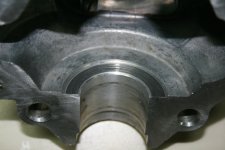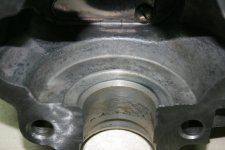The original engines were very much styled off the current Villiers at the time
The theory was villiers had contracts with other companies who made reel mowers and they did not want rotaries to challenge them
So Merv made his own.
My fathers 1862 model is still running , still on original bore and still gets used to mow the common areas of 5 blocks op flats ( appartmants to some ) .
The powertorque was the best engine ever made and only has 2 bearings
I have just mowed 3' tall tussock grass with one of mine for an hour and that is a 1986 model
Sold 3 used ones last week , all from the 80's & 90's . all on original bores and all running perfectly
Top of the engine is 4" to 6" lower than anything with a B & S or Honda engine on it .
There is nothing wrong with Lawn Boys , just like there is nothing wrong with Snap On tools.
But the high price is the result of market hype not outstanding performance
Then you add features that make a real difference like the carbs that can never varnish up & clog even if you forget to turn the fuel tap off .
Throttle cables that run internally down the air filter snorkel so unlike everything with a sprint / quadra / Europa engine on you don't mash up the throttle linkages when you mow under bushes
Then there is the snorkel itself , LB did for them to some models as well but clean air, so you never wear the bore and rarely ever have to change the air filter
Swing back blades.
engine strips down with nothing more than a No 3 posidrive screwdriver
Carb is a bayonet fitting so come off with a twist
Governor is phneumatic so never clogs blocks or breaks
Decompressor is also phneumatic so again never gives any problems and usually last around 30 years when it will need a new diaphragm &/or spring .
Cooling air blows down under the engine so assists with the catching
Exhaust blows down under the deck so reduced noise ( LB did that with some too from memory )
Muffler is clipped on, so no rusted in then broken off muffler bolts
Periodic servicing is replacing 5 X O rings and 2' of PVC fuel line
Then every third one replace or repair the decompressor
And of course despite what the marketing department foisted on them they will happily run on 50:1 which is what I have been using for 40 years and according to Victa, if you use their super duper branded oil ( thus very very expensive ) you can run them 100:1
Cut off switch is also enclosed inside the carb so it can not get affected by weather or debris build up and you can actually mow under water ( did it to win a bet , got very wet ) but being totally enclosed no affected by heavy rain dust storms or even snow .
And being all cast iron, apart from the alloy head, & zinc pull start easy to make , suffers no heat distortion & economic to recycle
There is more to engine quality than the number of bearings although absence of them dose lean towards the lack of longevity .




